The
Double Pulsar, one of the Holy Grail of Pulsar Astronomy
There is no doubt that the role of PhD students in science is
always relevant. They are enthusiastic, they have a lot of energy,
and they are of course open minded. And in pulsar astronomy, female
students have played a major role. The original discovery of pulsars
was due to Jocelyn Bell, whose perceptiveness was fundamental
to drive the Antony Hewish experiment toward the discovery of
pulsars. After about forty years since then, we had the privilege
to discover a Holy Grail of pulsar astronomy (this is indeed the
motivation of the EU Descartes Prize): the most relativistic binary
pulsar PSR J0737-3039, which turned out to be also the first ever
known Double Pulsar. Also in this case, a prominent role was played
by a young female, Marta Burgay, one of my PhD students in Bologna.
The exciting circumstances of this discovery can be found following
the link to the "Amazing Story"
from the Home page, while my interview with Thomson ISI, which
registered the original discovery paper as the most cited in year
2004, can be found following the link "THOMSON-ISI"
from the home page. Details on the Descartes Prize awarded to
our group can be found following the link "Awards"
from the Home page.
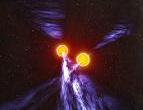 |
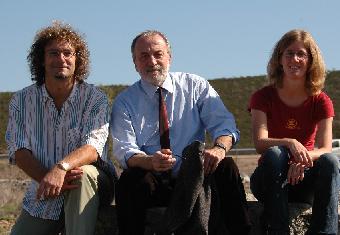 |
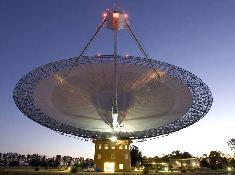 |
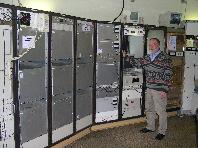 |
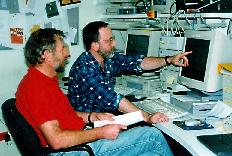 |
| An
artistic view of the double pulsar system, a rare laboratory
of gravity physics. |
My
research group: Andrea Possenti, myself, and Marta Burgay,
at the site were we are building the Sardinia Radio Telescope,
near Cagliari. |
The
Parkes radio telescope, in Australia, where we discovered
the double pulsar. |
A
complex pulsar backend developed at Parkes, played a major
role in the discovery of the double pulsar. |
Dick
Manchester, and myself at Parkes, testing the pulsar observing
system. |
|